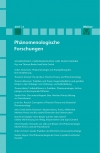Abstracts
José Filipe Silva: Intentionality in Medieval Augustinianism
Since Brentano, intentionality has become a key feature of debates within philosophy of mind and epistemology, expressing the directedness and the aboutness of mental acts. In recent decades, a wide range of studies has shown the historical background of this concept beyond the historical sources Brentano himself acknowledged. Augustine (354–430) has been prominently mentioned in some of these studies, the focus of which has mostly been on the aboutness aspect, that is to say on how this mental event is about a particular thing. I think there is yet another side to Augustine’s account of intentionality and this is the general undetermined directedness of the soul to the world, which results from its way of being in the body. Such an account commits Augustine to a certain account of perception, one which does not accept that we are causally acted upon by material things, but rather suggests that we are the agents, and causes, of our own cognitive acts. This is true not only of Augustine but also of many medieval authors within the tradition of Augustinian philosophy of perception. The focus of this article is how this position is elaborated in some thinkers of the Middle Ages, namely Henry of Ghent (1217–1293) and Peter John Olivi (1248–1298).
Nicholas A. Oschman: The Constitution of the Intellect and the Farabian Doctrine of First and Second Intention
This article examines Abu Nasr al-Farabı (c. 872–950/1) on the topic of intentionality, with particular focus on how intentionality is integral for the constitution of the intellect within his psychology. Unfortunately, targeted study of al-Farabı’s doctrine of intentionality has been largely neglected since Kwame Gyekye’s 1971 essay, The Terms ‘Prima Intentio’ and ‘Secunda Intentio’ in Arabic Logic. Gyekye showed that the Arabic (and thus the Latin) doctrine of first and second intention originated within the texts of al-Farabı,not the texts of Avicenna, as had been previously thought. In response, this article aims to show three things. First, while the doctrine of first and second intention appears in al-Farabı’s texts, it is not as clearly developed or defined as is presented in Gyekye’s 1971 article. al-Farabı both lacks consistent technical terminology for the doctrine (as he discusses it across disparate sciences, in unrelated contexts) and develops it far too little to fully flesh out his doctrine. Second, even given the fact that al-Farabı’s discussion of intentionality is underdeveloped, Gyekye was right to credit the doctrine to him. And third, al-Farabı’s doctrine of first and second intention is not merely important to understand his positions regarding signification and universals; they play a pivotal role in the constitution of the human intellect.
Gianfranco Soldati: Appearances and Illusions
This paper deals with the nature of perceptual appearances. It argues that they are objective relational properties of external objects. In perceptual experience, we are acquainted with such appearances. These are not sense data, as usually understood, and they are not identical to the properties we attribute to external objects through the usage of qualitative concepts such as ‘red’, ‘square’ and ‘sweet.’ We use such concepts in order to describe properties that are manifest in perception, not in order to describe appearances. One and the same property, such as the bent shape of a stick, can appear in different ways in different contexts. None of those ways is more or less appropriate, because things simply appear the way they do. The choice of a certain context determines the normal conditions for the possession of qualitative concepts. Standard perceptual illusions are perceptual experiences. They mislead us, not because they are incorrect, but because they prompt us to use concepts that are not appropriate under the obtaining conditions.
Luca De Giovanni: Husserl on Intentionality and Attention. From the Logical Investigations to Genetic Phenomenology
This paper discusses the role of attention in the phenomenological analysis of intentional experience in light of the problem of the relation between consciousness, intentionality, and transcendental subjectivity. Are these concepts equivalent? Or should we rather say that there is more to intentionality (and subjectivity) than consciousness? Does subjectivity embrace an unconscious domain? And, if so, how does this unconscious, yet intentional, life of subjectivity operate and how is it related to consciousness? In order to answer these questions, the paper tracks the development of Husserl’s conception of attention from the Logical Investigations to genetic phenomenology, by focusing on his analyses of temporality in the Bernau Manuscripts, on the relation between activity and passivity in the Analyses Concerning Active and Passive Synthesis, and on the issue of the self-constitution of subjectivity.
Diego D'Angelo: A Phenomenology of Creative Attention. Merleau-Ponty and Philosophy of Mind.
This paper develops the concept of ‘creative attention’. Against classical theories that understand attention as a spotlight that brings objects into focus, I will argue that attention is a complex phenomenon structured in different layers. The most basic layer is perceptual, passive and pre-predicative: at this level, attention is creative – and this is the central claim of this paper – because it institutes meanings and rules for our behaviour.
Antony Fredriksson: The Alien World, Attention and the Habitual
This article examines the role of attention in encounters with the unknown. By examining this process of the unknown becoming known through a reading of some seminal works, notably by Merleau-Ponty, Wittgenstein, and Waldenfels, the article focuses on the existentially significant characteristics of the function of attention that are disclosed by the encounter with an alien environment. Thereby, attention is considered as being neither fully under the control of the subject, nor completely the result of the external conditioning of our sense perception. Rather, attention will be seen to reside within a reciprocal field of tension between the familiar and the alien. This is related to Merleau-Ponty’s concept of ‘intentional arch’, describing the process of transition from the indeterminate to the determinate. Endorsing this account of attention will allow us to understand the limits of approaches to enacted and embodied cognition that still understand the process of getting to know something new, and even something alien, as a form of ‘domestication’.
Roberta De Monticelli: Intentionality, Agency and Personhood. Outline of a Phenomenological Theory of Acts
Modern tradition takes a person to be a rational (and moral) agent, namely an agent capable of acting on the basis of reasons – often desire-independent reasons, and particularly moral reasons. So, agency and freedom are involved in the definition of personhood. But what about the embodiment of persons? What about their rootedness in the particular circumstances of a human life – time, space, community of origin, material, and axiological culture? What about the individual identity of persons, their irreducible individuality? The phenomenological notion of intentionality has a widely neglected richness of content, making it a key conceptual tool, capable of explaining not only consciousness but also rational agency, that is personhood, right from the level of the most basic and embodied instances of consciousness: perception, emotion, and spontaneous action. These should be considered as acts, rather than as states, and the discussion of the specific intentionality of these acts and their motivational relations purports to be an original contribution to a genetic phenomenology of embodied, individualized personhood and rational agency.
Jörn Müller: A Medieval View of Practical Intentionality. Intentio in Aquinas’s Psychology of Action
Intentio is a widespread concept in the writings of Thomas Aquinas (1224/5–1274). This article focuses on its use in the description and explanation of human action because Aquinas is the first author to elaborate a coherent conception of practical intentionality in the history of Western philosophy. The analysis shows that his account is characterized by five distinctive features: Practical intentionality is (1) an active striving toward a causally relevant intentional object (i. e., a goal), which is not ‘in the mind’, (2) a volitional state of mind rather than a distinct mental event, (3) action-guiding because it is a principle of concrete human actions which realize it, (4) essentially tied up with rationality, which is needed for bridging the operational distance to the final goal by deliberation on the means conducive to it, (5) potentially complex – allowing for a plurality of simultaneous intentions – but at the same time unified in the hierarchical ordering of means and ends. The article also relates these features to modern discussions of intentionality in phenomenology and in analytic philosophy.
Michela Summa & Karl Mertens: On the Role of Attention and Ascription in the Formation of Intentions within Behavior
This article explores the roots of action in behavior. Departing from the standard understanding of action as ‘intentional behavior’, we argue that this view is often based on the underestimation of the intentional structures that are already operative within behavior. Distinguishing between a broader and a narrower meaning of intentionality, we then elaborate on the processes that lead from the diffuse and operative intentionality of behavior to the focused intentionality of action. In order to properly appreciate these processes, we show that a reassessment of the phenomenon of attention – which takes into consideration its double (passive and active) nature as well as its social embedment – is required. Finally, we discuss the interplay between the obtained reframing of the genesis of intentional actions with the phenomenon of social ascription.
Jan Slaby: Affective Arrangements and Disclosive Postures. Towards a Post-Phenomenology of Situated Affectivity
In this paper, I explore links between the phenomenology-inspired philosophy of emotion, especially discussions of affective intentionality and situated affectivity, and those strands of work in the field of cultural affect studies that take their inspiration fromSpinoza and Deleuze. As bridges between these fields, I propose the concepts ‘disclosive posture’ and ‘affective arrangement’. ‘Disclosive posture’ condenses insights from phenomenological work on affectivity, especially those pertaining to what Heidegger calls Befindlichkeit. ‘Affective arrangement’ is a descendant of Deleuze and Guattari’s term agencement. It refers to heterogeneous ensembles of elements coalescing into a sphere of heightened affective intensity in a local setting. I develop this notion into a tool for analyzing situated affectivity. As it does not yet figure prominently within debates in the philosophy of emotion, I will outline what is meant by ‘affective arrangement’ in some detail. Throughout, I discuss a productive tension between these two conceptual strands.
















